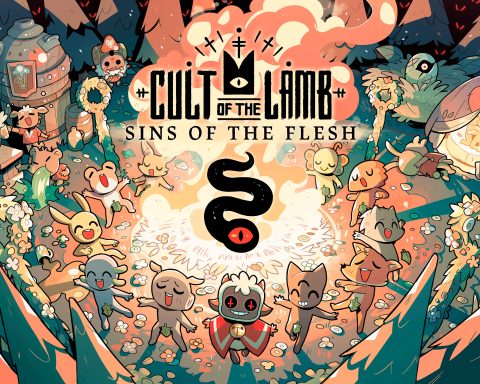SteamWorld has been kicking around for 13 years now, when the humble little SteamWorld Tower Defense landed on the Nintendo DSi via DSiWare. It has become a surprisingly robust if generally unheralded IP since then, dipping into genres as broad as RPG, XCOM clone and Mr Driller-like. SteamWorld Build is the most ambitious entry in the series to date, and it’s also arguably the best.
SteamWorld Build is a SteamPunk Western-themed city builder simulation that was clearly inspired by Ubisoft’s Anno series. The loop is simple – you plonk down residential buildings, which increases the population. Those “people” (robots, citizens, whatever you want to call them) then have needs, which you need to fulfil by providing them with amenities. Meanwhile, you’re also building up the industries that will supply you with the resources you need to keep the society growing and thriving. As you continue to grow, the needs of your community does in kind, and you’ll find your city filling out with all kinds of weird and wacky buildings.
SteamWorld Build is a little less complex and restrictive than Anno, being less demanding on precisely structuring the town so that the coverage of amenities, jobs, and facilities needs to be less intricately planned out. However, the general experience is the same, making SteamWorld Build an immediately accessible and comfy experience for people who are less familiar with the genre.
That’s only the first half of the game, however. Eventually, you’ll have the resources gathered so that you’re able to start using the mineshafts nearby and delving into the deeps. You’re looking for spaceship parts down there (the goal is to create a vessel to escape the planet, for reasons that become clear in the paper-thin narrative), and this takes the form of a very simple RTS. You put buildings down that summon a range of units into play, and then set them to explore and deal with the various monsters that they uncover down the deep dark.
Much like the play on the surface, this RTS action is comfortable and clearly designed for people who don’t play too many titles in the genre, but it’s charming and enjoyable for what it is. The big problem with all this simplicity is that it limits the longevity of the game, and I imagine that well before working through the five maps you’ll be craving for something with a bit more variety and depth. There’s only one real pathway through the game and that’s to scale quickly and then pump the finest units that you can afford out. Of course, the masterpieces of the genre have greater variety between those units, more specialised units to unlock additional strategies, and skill trees that SteamWorld Build lacks. But if this is your first simulation or RTS then none of that’s going to matter.
That lack of depth or complexity is not an inherent issue with the game. What is, however, is the lack of a deeper context, and I think that is ultimately what had me cut my time with SteamWorld Build short. This is a persistent issue with the overall series, too. Regardless of what genre the developer is working with, SteamWorld games have an incredible aesthetic and theme, but don’t do nearly enough with it. We are, after all, talking about steampunk – an incredibly rich narrative genre, and in this case the Western as a secondary genre. There are hints through the narrative that the developers know what they’re working with, and it’s done well enough that you’ll want more, and that’s why it’s ultimately so frustrating. Perhaps the developer needs to produce a visual novel or something, to work through how to better approach narratives going forward.
The other issue is technical: SteamWorld Build has a really lovely art style, but on the Switch it’s hit by a case of the fuzzies, especially when zoomed out. Things can also shrink to the point that it’s hard to make out key details – especially when playing in handheld mode.
These are forgivable (and hardly unusual for simulations on Switch, as the likes of Tropico have made abundantly clear in the past). What is more of a problem is how twitchy the controls are. While the framerate is smooth, lining up buildings in this game’s grid system is harder than it should be. Given the accessible difficulty, it’s not game-breaking, but it’s genuinely surprising because it might well be the first time that I’ve ever seen this developer make such an elementary user experience mistake. Whatever the narrative flaws in SteamWorld games, they’re typically flawless in execution.
I enjoyed SteamWorld Build a lot, but it’s not essential. Perhaps that’s why, 13 years later, this overall property is still searching for that breakout hit that will elevate it from indie charmer to a major property. The elements are all there: the theme, the quality aesthetics, and the maverick ability to move between genres while interpreting them in an accessible and engaging manner. But the developer really needs to figure out how to tell a compelling, deep and purposeful narrative with all these components. It’s the glue that’s missing from making SteamWorld memorable.
Shop Nintendo on Amazon (This is an affiliate link. By buying from it you support DigitallyDownloaded.net with a small commission)














